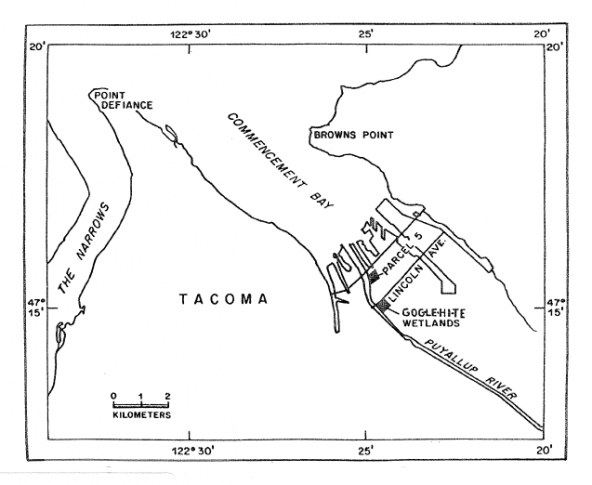The Gog-Le-Hi-Te Wetland System in the Puyallup River Estuary, Washington: phase V report
The work in 1990, which was the fifth and final year of U.S. Army Corps of Engineers permit-required monitoring, included continued systematic sampling of sedimentation, vegetation, fish, and birds.
Executive Summary
In 1990, the fifth and final year of the U.S. Army Corps of Engineers permit-required monitoring program for the Gog-Le-Hi-Te wetland system (formerly the Lincoln Avenue Wetland system) included sampling of sediment characteristics, vegetation, fish, and birds. This report discusses and compares the findings over the 5 years of monitoring. We conclude the following:
- The system continues to serve the target resources for which it was designed, and that the scope of use is highly dynamic.
- The system continues to undergo rapid and dramatic physical, chemical, and biological changes.
- Shifts in the composition of emergent vegetation continue in the upper intertidal.
- Transplanted Carex lyngbyei habitat has decreased >50% from its original (planted) area.
- Naturally-recruited Typha and other estuarine wetland taxa (Scirpus), as well as woody riparian vegetation (e.g., Salix), have increased their areal representation in the system.
- Fish utilization appears to have increased since 1988 in terms of maximum density.
About this article
Article Type:
Author:
Wetland Ecosystem Team: Ronald M. Thom, Charles A. Simenstad, Jeffery R. Cordell and Laura Hamilton
External Publication Source:
University of Washington
Originally Published:
December 1991
Posted in EoPS:
07/27/2015
Tags:






